Your browser is out-of-date!
For a richer surfing experience on our website, please update your browser. Update my browser now!
For a richer surfing experience on our website, please update your browser. Update my browser now!
Michel Serres writes about Thumbelina, in his book titled Thumbelina: The Culture and Technology of Millenials. Serres uses the image of Thumbelina to present a pressing concern of the digital age about the human that is bound by the culture of technology. Thumbelina represents a new kind of human being - one who is small and agile, able to adapt to rapidly changing environments and to interact with technology in curiously newer ways. Serres sees Thumbelina as a symbol of the millennial generation that wants to rapidly grow along with the technology. Thumbelina desires freedom and autonomy, and her story is one of transformation and growth. She moves from a passive object of desire to an active subject that takes control of her own destiny. In this way, Serres sees Thumbelina as a model for the new kind of human being that is emerging in an age driven by technology. This model provides the conceptual basis for posing a similar question for the space that is embodied by this new figure. This study, therefore seeks to explore parallely a space for the figure of Thumbelina, using the understandings of her attributes as a framework. Serres defines Thumbelina as a figure with her head in her hand. She no longer has the same body or the same life expectancy. She no longer communicates in the same way; no longer perceives the same world; no longer lives in the same nature or inhabits the same space. She is on a perpetual adventure. Her sense of belonging is no longer with a particular piece of land but with earth itself. Her senses has been liberated. She is a purely experiential body. All skin. All touch. She is an individual who is unique but also generic. Serres’ description of Thumbelina is a continuous allegory to the beings of the digital age. Through the figure of Thumbelina, Serres presents a philosophical reflection on the relationship between humans and their built environment, exploring concepts such as scale, embodiment, and perception. It is a direct correlation between ontology and ecology. Architecture, too, is a field of “perpetual adventure”, requiring the individual to employ their senses; a constant quest with impermanent answers. The project proposes to create an analog of the figure of Thumbelina through a ‘room’ for the anonymous and the individual by inquiring into the writings of Serres. The appropriation of the characteristics described by him is done by questioning matters of the nature, form and qualities of the room, purely based on the sense of touch.
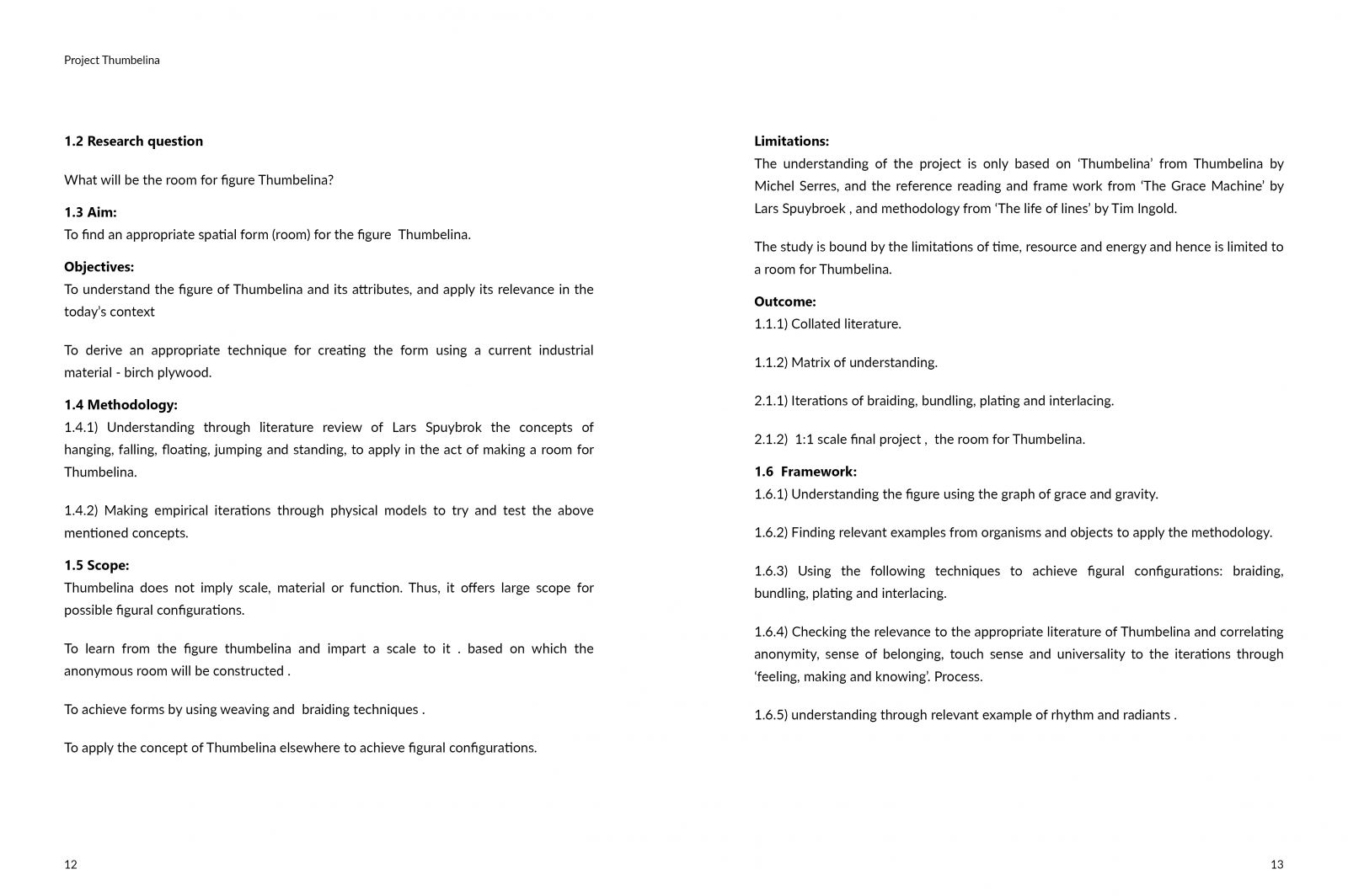
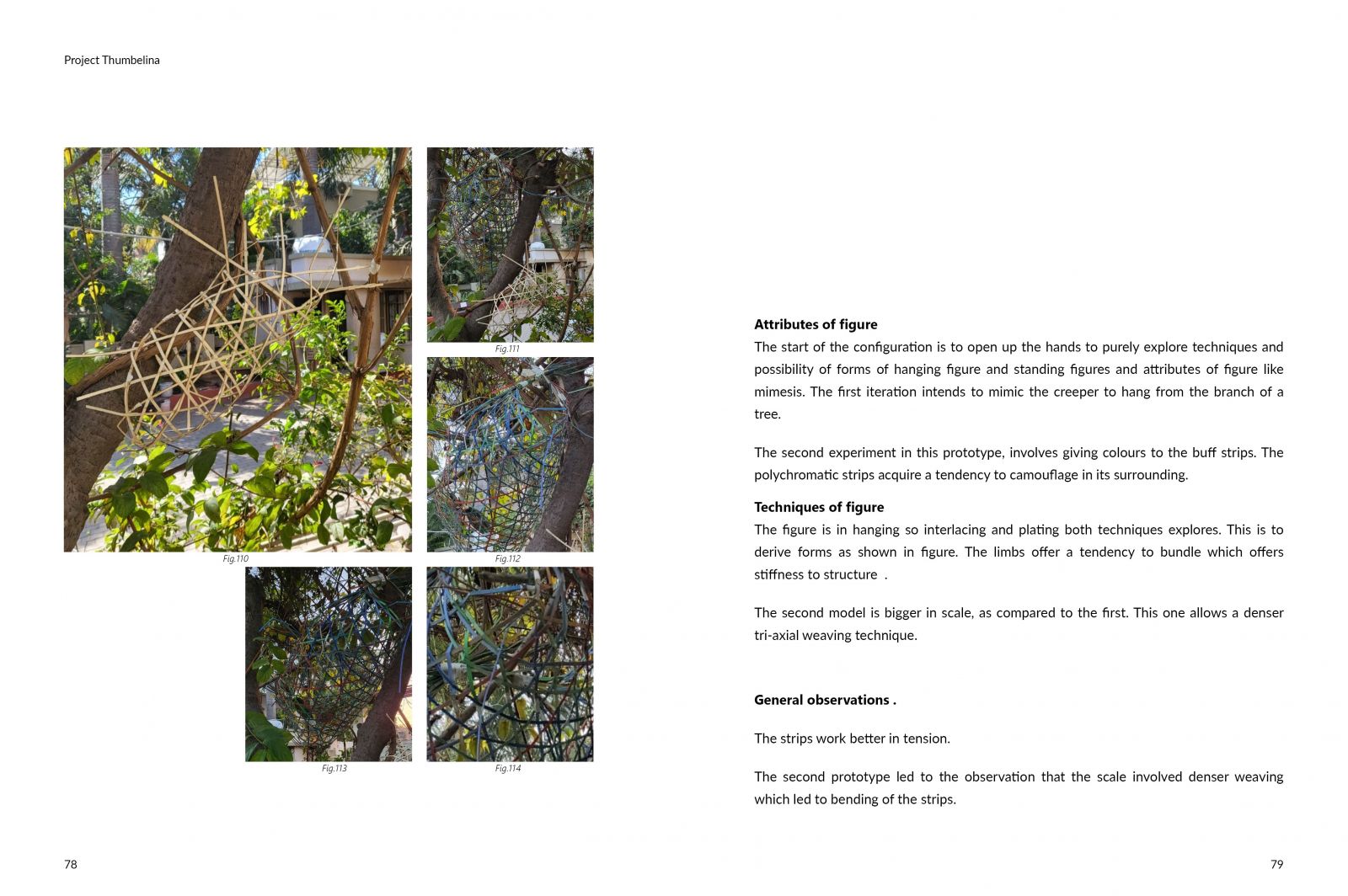




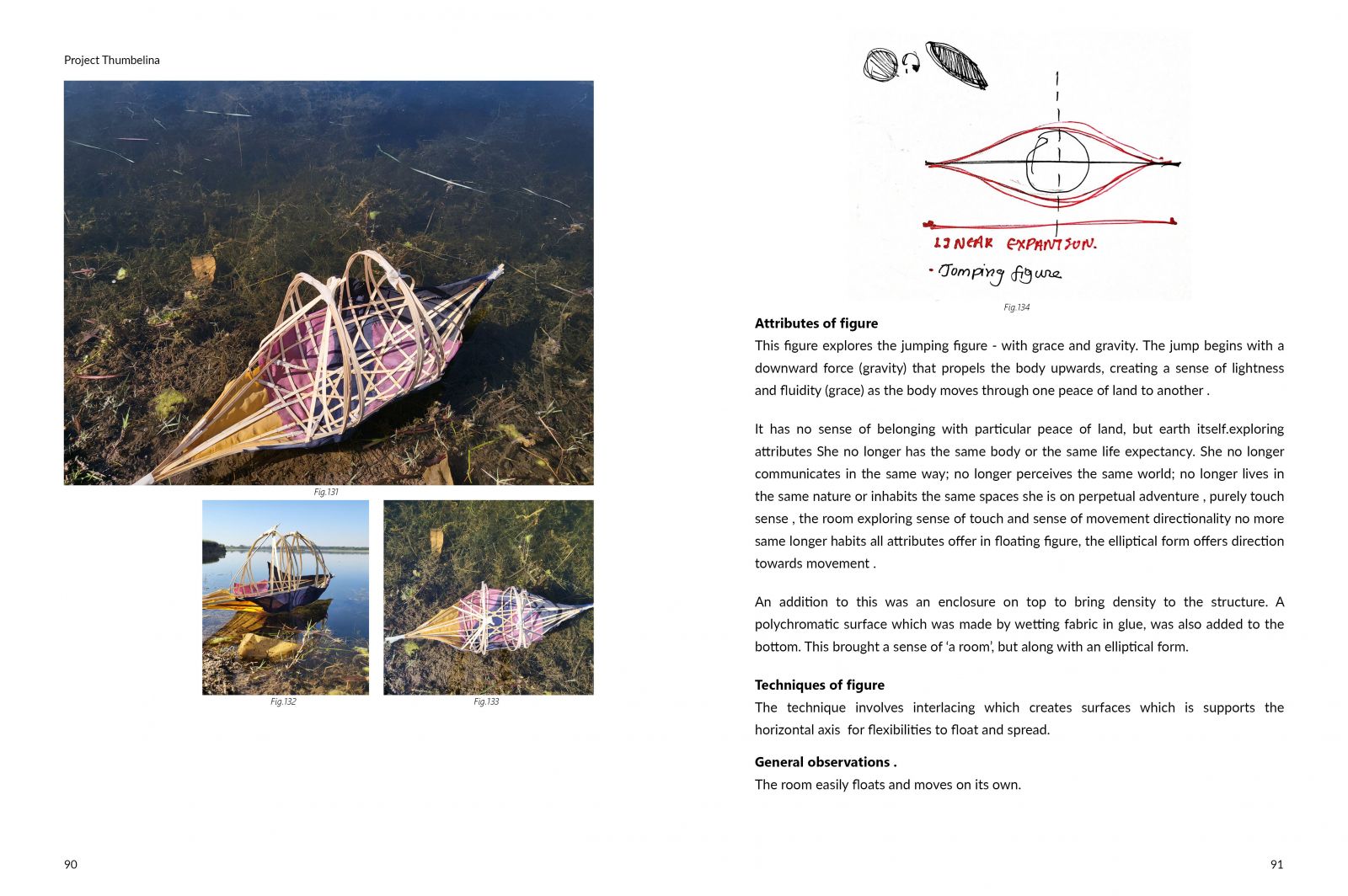
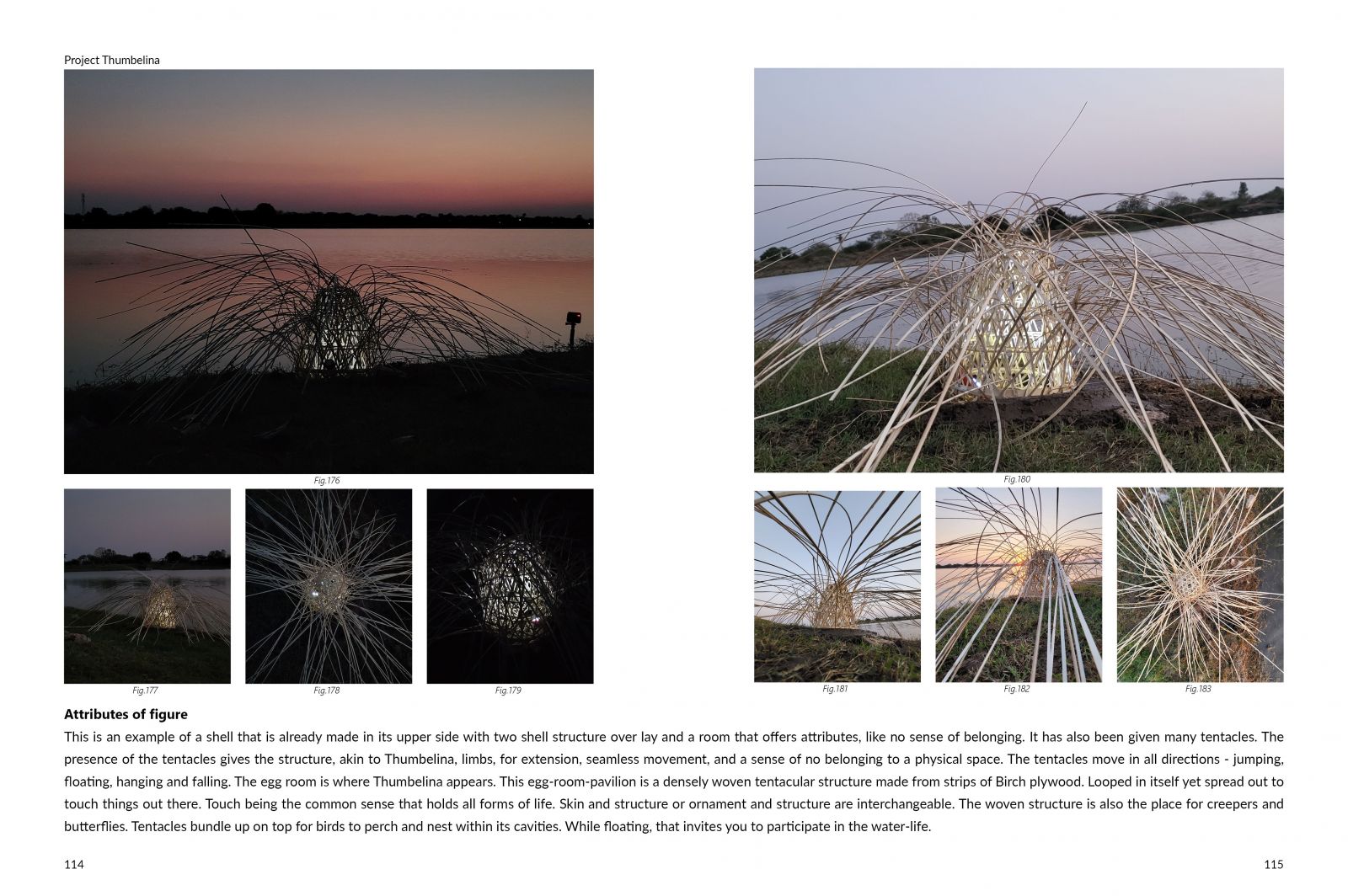
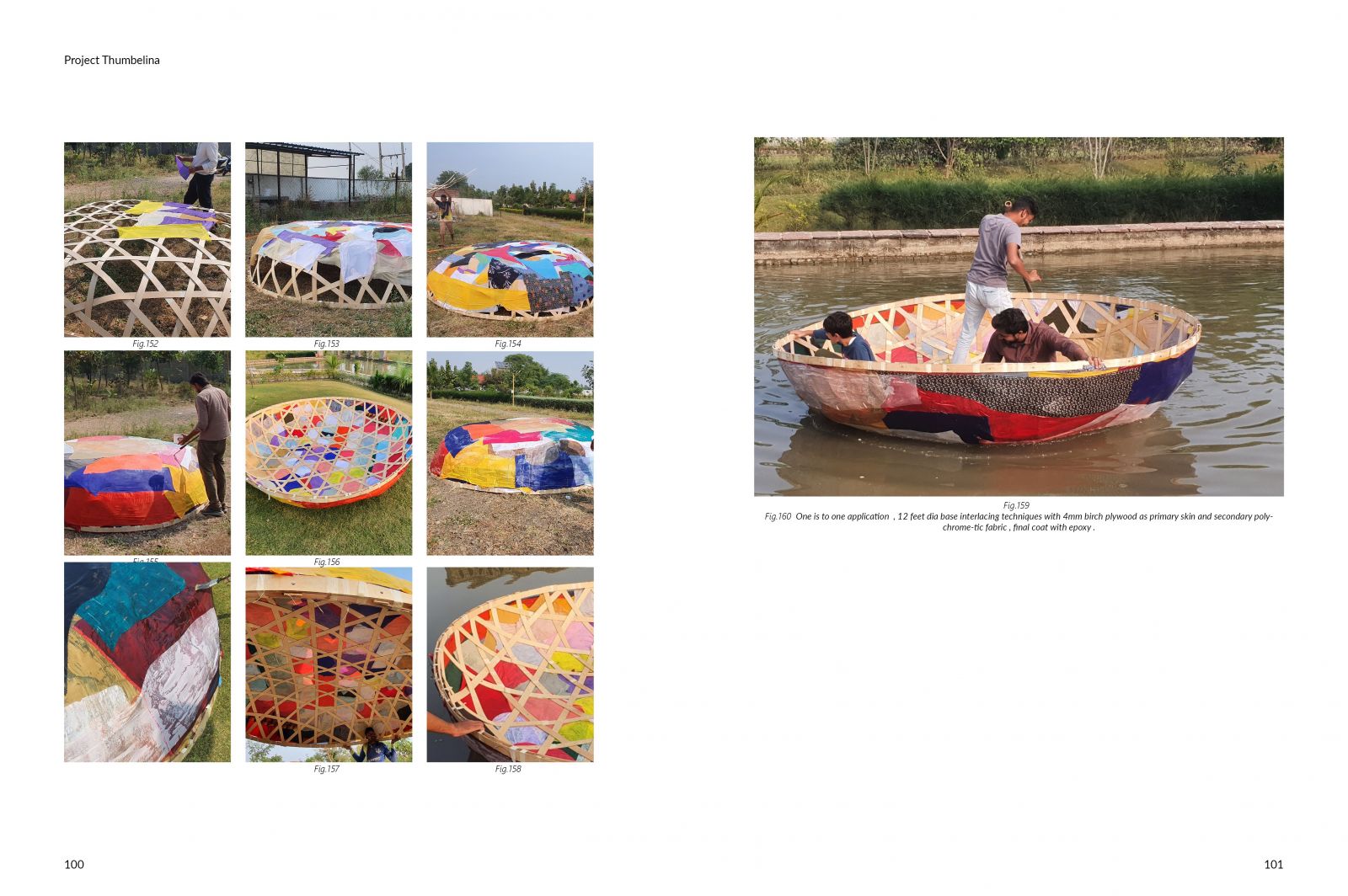
.jpg)